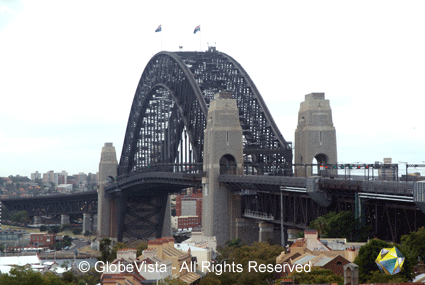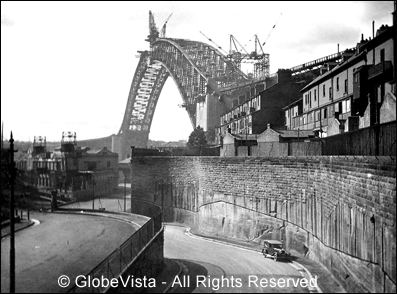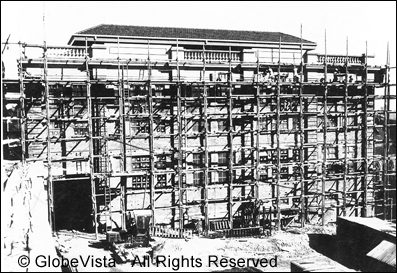Old Coat Hanger
The Sydney Harbour Bridge began construction in 1926 and was completed in 1932, linking the southern & northern shores of Sydney. Often referred to as the “Old Coat Hanger”, the bridge cost $20 million dollars to complete and was eventually paid off in 1988.

Very Riveting
The general design was made by English engineer Ralph Freeman and Dr J.J.C Bradfield & the officers of the NSW Department of Pubic Works. It took 1400 workers to build the bridge & there was 16 deaths due to accidents during construction. The bridge is made of steel & contains 6 million hand driven rivets.
Huge hinges absorb the bridge’s expansion which rises & falls approx 180mm due to the hot Australian climate. The bridge is the world’s largest Steel Arch Bridge (but not the longest) & the deck at 49m makes it the widest longspan bridge in the world. When the bridge originally opened, a car cost 6 pence and a horse & rider 3 pence to cross. The total length of the bridge is 1149m, arch span 503m & total steel-works weighs 52,800 tonnes. Approx 150,000 cars cross each day.
Not All Smooth Sailing
During the opening of the bridge, the ceremony was disrupted by Francis de Groot. De Groot mounted on a horse and with a sword in hand rode forward and cut the ribbon. He declared his act in honour of the King and Empire.
Construction of the Sydney Harbour Bridge
These photos were taken during the construction and I have included the notes written on the back of each photo.

When the last piece of steel for the arch was placed in position the gap was 3 ft 4 inches. They have been slackening off the cables since August 5th with hydraulic jacks and today they have dropped, that the gap is now 14 inches. It is marvelous they can drop slowly, thousands of tons of steel in this manner.

The concrete wall and tunnel arches are the approaches you can also see. The steel approach to the bridge showing roadway in the centre is wide enough for 6 motor cars abreast. On each side of that are two sets of rail tracks, in all four trains and on each side of them a 10′ 0″ foot path.

The church in this photo is the Trinity Church and it is over 100 years old. The Substation and Switch House can be seen at the rear of church. The side girders of the arch are wide enough to drive a motor car over, wider than the ordinary footpaths. I think they are about 10′ 0″ wide.

Sub Station Argyle Cut
The second floor of this sub station opens onto the bridge approach. The front wall is built on the approach wall to the left of frame.
